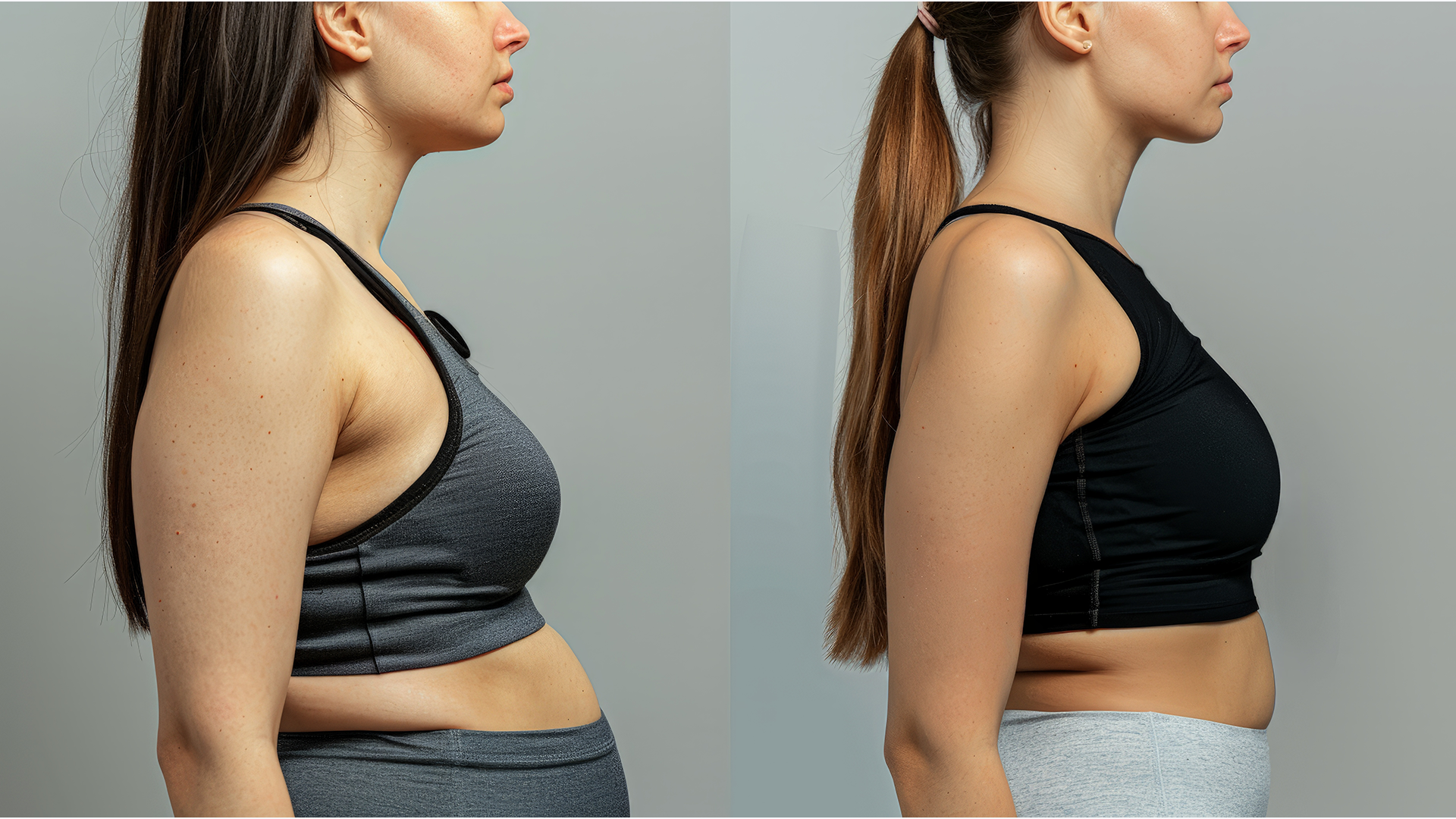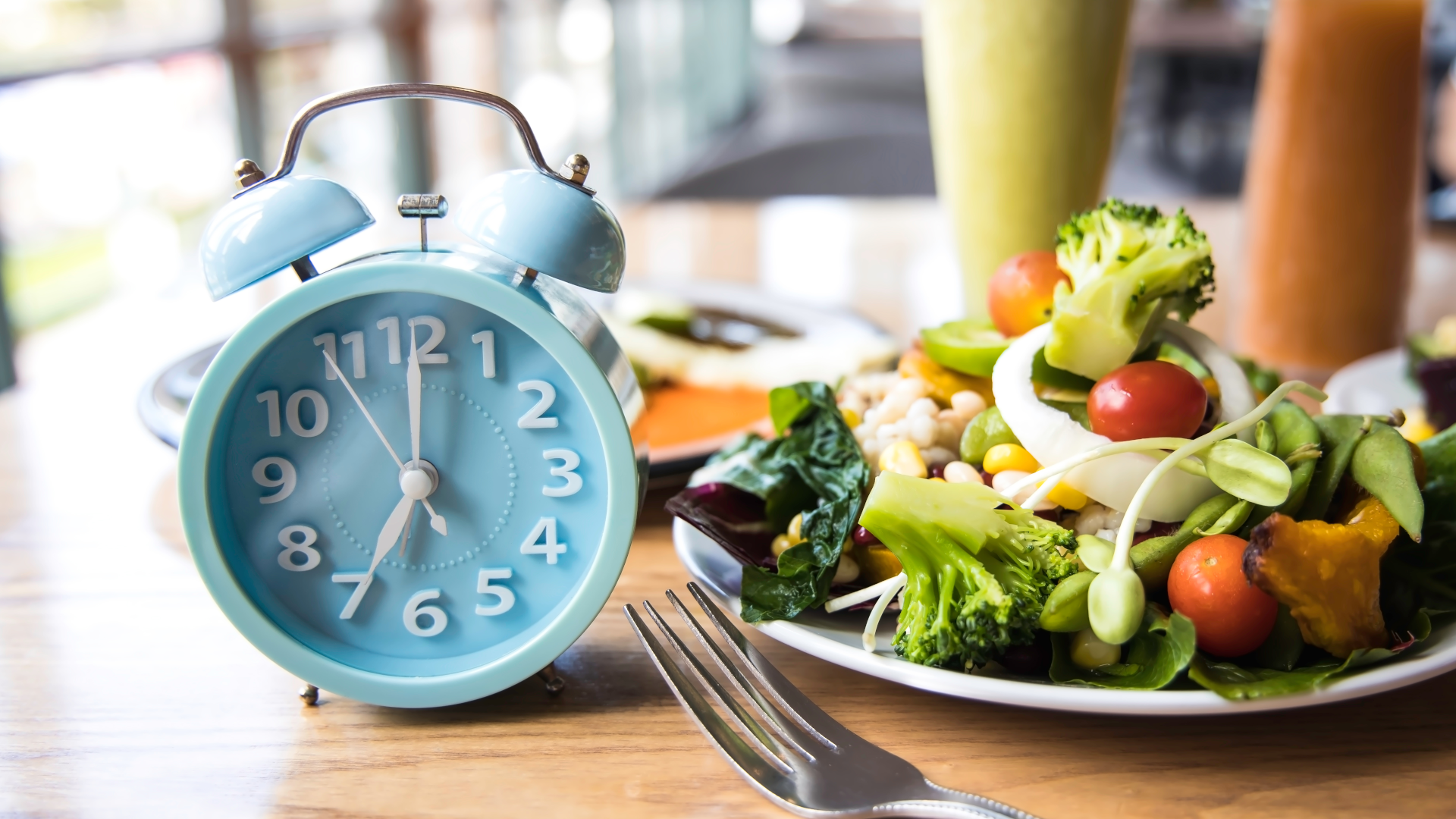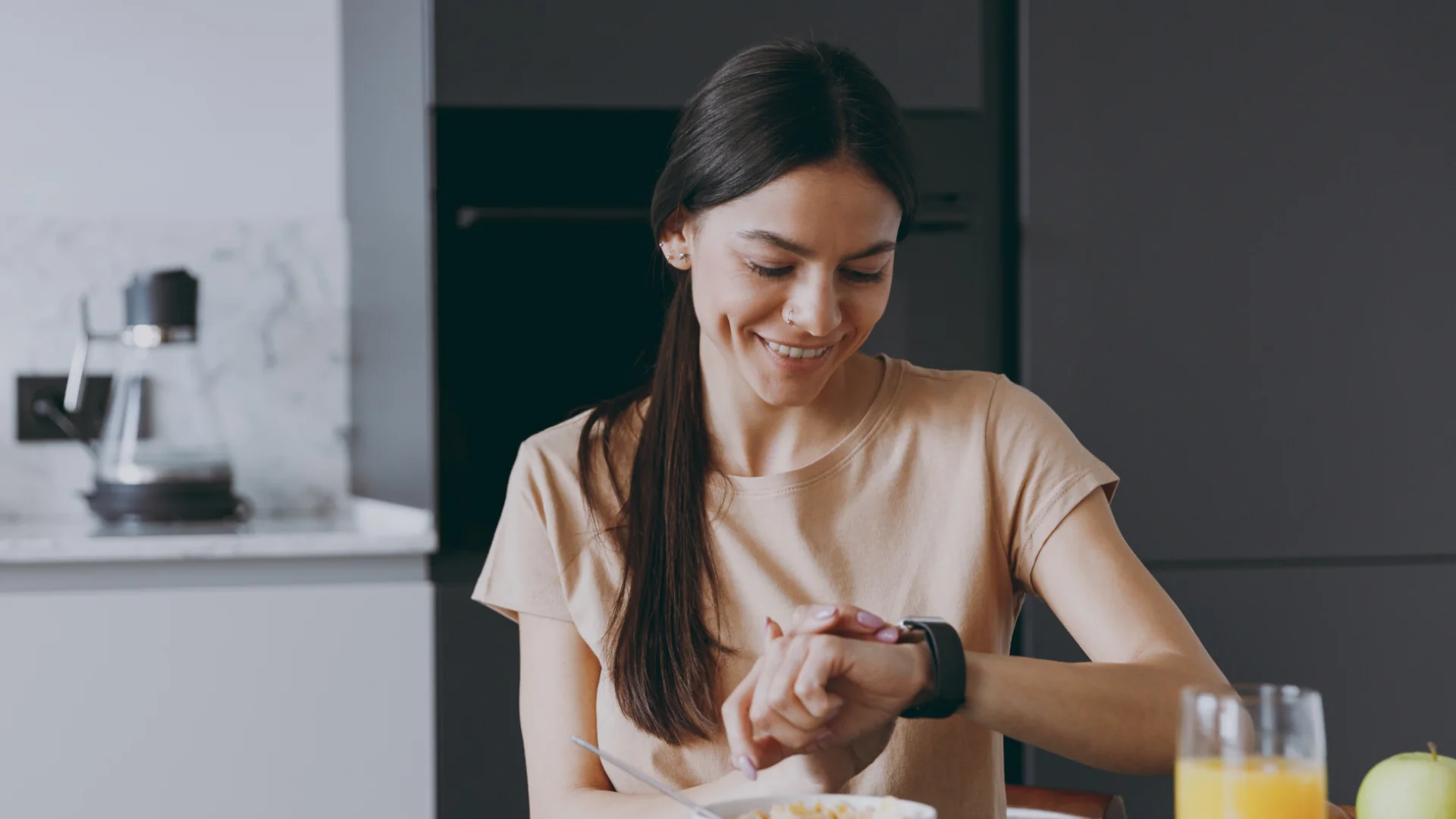What you'll learn in this blog |
We hear you.
Losing weight isn't always fun. Or easy. Throw in the fact that you’re not 20 anymore— shedding pounds may even seem impossible.
You don't eat that differently. You might even move more than you once did.. But you keep putting on weight—why?
Here, we're going to explore how metabolism, hormones and other factors may be halting your weight loss progress. We're also going to give you all the best strategies, tips, and tools to help you lose weight and keep it off for good.
Think life weight loss hacks, diet tips and exercise programs that work.
Because life doesn't stop at 30 — it just gets going.
Why You’re Gaining Weight
Don't worry.
There are a ton of biological reasons why you might be putting on weight at 30—and it's not all down to things you are or aren't doing.
Grab a coffee, sit down, and let's get stuck into why those pesky pounds might be piling on and how you can lose them for good.
Metabolism and Muscle Mass

One of the main reasons you might have put on weight in your 30s or may be struggling with weight loss is because of the decrease in muscle mass that occurs as our bodies undergo age-related physiological changes.
It can be linked to a reduction in estrogen levels, which affects the ability of the body to build and maintain muscle tissue.
It actually has a technical term which is ‘sarcopenia’. This refers specifically to the gradual loss of muscle and strength which occurs in the 30s.
Muscle tissue is metabolically active, right? And that means it burns more calories than fat tissue.
The result? When muscle mass is lost, it means there are fewer calories burned at rest and that leads to a slower metabolism.
As we know, metabolism is the process in which the body converts what we consume— such as food and drink—into energy.
For example, if we eat a 800 calorie dinner, this means our metabolism will convert those calories into energy that the body can use for various processes like physical activity, maintaining body temperature, and organ function.
The metabolism breaks down the nutrients from the dinner, including carbohydrates, proteins, and fats, into smaller molecules to be absorbed by the body. These nutrients are then either immediately used for energy or stored for later use.
As you age, your metabolism slows down, causing you to burn less calories which can, of course, lead to weight gain. So that 800 calorie dinner may need to either have a few calories shaved off, or you may need to move more after than when you did in your 20s.
But did you know, there are ways to speed up your metabolism for weight loss?
Hormones
Hormones are a big part of weight fluctuation for women in our 30s.
For women, a decline in estrogen levels during perimenopause and menopause often results in an increase in abdominal fat and muscle mass also begins to decrease.
But it isn’t just estrogen, either.
Other hormones, like insulin and cortisol can also influence weight gain.
Cortisol isn't called the "stress hormone" for nothing. Increased levels of it can lead to weight gain, particularly with regards to belly fat.
Insulin, on the other hand, regulates blood sugar levels. When insulin levels are unbalanced, weight gain can follow, and difficulties in losing weight can arise.
More Reasons You Gain Weight in your 30s
You're probably thinking you don't want to hear even more reasons why 30 brings extra pounds and an inability to shift them.
But think of it like this.
If you understand all of the factors that lead to weight gain, you can target the areas that lead to weight loss really effectively and meet your exact needs.
The result?
A weight loss plan that works.
Let's go!
Other factors that can contribute to weight gain in your 30s are…
Water retention
Water retention, also known as fluid retention, can contribute to weight gain in women during their 30s.
It happens when the body can't retain fluid balance which is due to things like dehydration and a diet with too much salt.
Do you know which foods and drinks are high in sodium?
Things like:
- Processed foods
- Fast food
- Pre-packaged snacks
- Some alcohol like beer, pre-made cocktail mixes and Bloody Marys
On the other hand, dehydration can also affect water retention and weight gain.
When the body is dehydrated, it tries to hold onto water to prevent further loss, leading to water retention.
In an attempt to compensate for the lack of water, the body retains fluid which then results in unwanted weight gain.
It's so important to be mindful of being properly hydrated and trying to get in eight glasses of water across the day. It actually helps with stopping water retention and maintaining fluid balance.
Eating a balanced diet (we'll tell you how, later) which is low in sodium and rich in nutrients can help with water retention. Drinking enough water also helps a ton too—so bear those in mind if you feel bloated and it feels like belly fat.
Lack of sleep

Not many of us actually get eight hours of solid sleep a night. Screens, business, working late, drinking alcohol, eating in the evening…you name it.
There are a bunch of reasons why you might not be getting a good night's sleep and this may be affecting your waistline.
Did you know that broken sleep and sleep deprivation can actually lead to weight?
It's a fact and it can also trigger you into making unhealthy dietary choices.
Check it out.
It's those pesky hormones again. A lack of quality sleep can disrupt the balance of hormones that regulate your appetite and hunger. This can lead to reaching for the high fat, high sugar, calorie-dense foods when you're sleep deprived.
Did you also know that sleeping badly can affect the brain regions responsible for evaluating food choices—and that means your self control will be lower while your reward-driven regions will be on high alert.
Cue a dangerous cycle of overeating and difficulty in maintaining a healthy eating plan.
But we get it! It's so easy to reach for the cookie dough ice cream when you're not feeling great and you want a quick pick me up. You are human after all. It's just knowing that it's not always the answer and there are other choices out there that don't feel bad the next day.
Another interesting fact is that sleep problems are also linked to a lack of key nutrients like magnesium and calcium. A lack of these can hinder restful sleep and can impact your hormonal pathways further resulting in poor sleep regulation.
Okay! That's enough about sleep. But does some of this start to make sense?
Weight gain in your 30s can be due to so many reasons you probably had no idea about. But now you do, you can tackle them head on and get back in control of your weight.
Depression or Anxiety
Firstly, it's important to say that if you feel anxious or depressed, always head over to your healthcare provider to talk through your symptoms—that way you can get help you need to feel your best again.
These conditions can lead to piling on the pounds and do make being motivated to lose weight challenging—understandably.
Anxiety or depression can also lead to emotional eating and even insomnia. Plus, there might be side effects from the medication that you have been prescribed to treat these conditions.
Getting your physical and mental health tip top will help with your motivation and weight management goals moving forward.
That's enough of the reasons why you might have put on weight in your 30s now!
Why?
Because it's time to look at solutions.
How do I Lose Weight and Keep it Off?
It's the golden question isn't it?
Well, it's all down to diet, exercise and some supplements to help you on your way to weight loss!
But the good news is that weight loss in your 30s is possible.
Let's start with diet.
What Should I Eat to Lose Weight in My 30s
Losing weight and keeping it off in your 30s involves a combination of healthy eating, regular physical activity, and adopting sustainable lifestyle habits.
It's important to focus on creating a balanced and nutritious diet that you can maintain long-term.
Here are some tips and a sample weekly meal plan suggestion to help you get started:
1. Calorie deficit
To lose weight, you need to consume fewer calories than you burn.
Aim for a moderate calorie deficit by reducing your daily calorie intake by 500 to 1000 calories. This can result in a gradual and sustainable weight loss of one to two pounds per week.
2. Portion control
Be mindful of portion sizes to avoid overeating. Use smaller plates and bowls, and practice listening to your body's hunger and fullness cues.
3. Balanced meals

Focus on including a variety of nutrient-dense foods in your meals, including lean protein, whole grains, fruits, vegetables, and healthy fats. This will flood your body with essential nutrients while keeping you satisfied.
4. Meal planning and preparation
Plan your meals in advance to prevent impulsive food choices. Prepare meals and snacks at home to have more control over ingredients and portion sizes.
What's a Good Meal Plan to Lose Weight After 30
Here’s a sample weekly meal plan suggestion:
Day 1:
Breakfast: Greek yogurt with mixed berries and a sprinkle of nuts.
Lunch: Grilled chicken breast salad with mixed greens, cherry tomatoes, cucumbers, and a light vinaigrette dressing.
Snack: Carrot sticks with hummus.
Dinner: Baked salmon with roasted Brussels sprouts and quinoa.
Dessert: A small bowl of mixed fruit.
Day 2:
Breakfast: Oatmeal topped with sliced banana and a drizzle of honey.
Lunch: Whole wheat wrap filled with grilled vegetables and lean turkey slices.
Snack: Greek yogurt with a handful of almonds.
Dinner: Stir-fried tofu with mixed vegetables and brown rice.
Dessert: Dark chocolate squares.
Day 3:
Breakfast: Veggie omelet with spinach, mushrooms, and feta cheese.
Lunch: Quinoa salad with roasted chickpeas, cherry tomatoes, and feta cheese.
Snack: Apple slices with almond butter.
Dinner: Grilled shrimp skewers with steamed broccoli and a side of quinoa.
Dessert: Baked apple slices with cinnamon.
Day 4:
Breakfast: Whole grain toast topped with avocado and a poached egg.
Lunch: Lentil soup with a side salad of mixed greens and vinaigrette dressing.
Snack: Greek yogurt with sliced strawberries.
Dinner: Grilled chicken breast with roasted sweet potatoes and steamed asparagus.
Dessert: Frozen yogurt with a sprinkle of granola.
Day 5:
Breakfast: Protein smoothie made with almond milk, spinach, banana, and a scoop of protein powder.
Lunch: Grilled shrimp salad with mixed greens, cherry tomatoes, cucumbers, and a light dressing.
Snack: Celery sticks with peanut butter.
Dinner: Baked cod with roasted vegetables and quinoa.
Dessert: Sliced mango.
Remember, this is just a sample meal plan, so it's essential to personalize it based on your dietary preferences and any specific nutritional needs.
Always consult with a healthcare professional or a registered dietitian before making significant changes to your diet.
Can I Drink Alcohol While Trying to Lose Weight?
Yes, sorry to say alcohol is often high in calories from pre-made mixes to added sugar to ingredients you can't even pronounce.
Keeping it as a treat is best. And opting for spritzers, clean drinks like G&T and diet lemonade with vodka or shandies will keep the calories low, but enjoyment high.
Related content: 10 Lowest Calorie Cocktails to Enjoy While Losing Weight
What Exercise to Do to Lose Weight

Okay, now we know all about what healthy diet choices you can make to lose weight, it's time to tackle the exercise to shed the pounds.
When it comes to shedding pounds, a combination of both cardiovascular exercises and strength training is key.
Why?
Because cardio contributes to creating a calorie deficit, which is essential for weight loss. A healthy dose of cardio also helps with improving heart health while reducing the risk of diabetes, cancer, and heart disease.
Strength training, on the other hand, helps build and maintain muscle mass. By adding strength training exercises in the mix, you can preserve muscle mass and build a little extra lean muscle mass.
The combination of the two is the sweet spot to aim for which will ideally get you back to a healthy weight you’re happy with and result in a reduction of body fat you are thrilled with.
We'll start off by telling you which cardio and strength exercises are best to target weight loss. Then we've got a trial exercise plan for a week you can try out (with the say so of your healthcare provider).
Here are some exercise categories and examples within each, along with whether they can be done at home or in the gym:
Cardiovascular Exercises
Walking Brisk
Walking is a low-impact exercise that you can do anywhere, including at home or on a treadmill at the gym.
Running or Jogging
A more intense cardio exercise that you can also do both indoors and outdoors.
Cycling
Whether using a stationary bike at home or cycling outdoors, this exercise is great for burning calories.
Swimming
An excellent full-body workout that you can do at a local pool or even at home if you have a pool or access to one.
Jumping Rope
A simple way to get your heart rate up that can be done at home or at the gym.
HIIT (High-Intensity Interval Training)
This involves alternating intense bursts of exercise with short recovery periods. You can do this with a variety of exercises such as burpees, mountain climbers, or jumping jacks, either at home or in a gym.
Strength Training Exercises
Bodyweight Exercises
These exercises use your body weight for resistance, and you can perform them at home without any equipment. Examples include squats, lunges, push-ups, and planks.
Dumbbell or Barbell Exercises
These exercises require weights and can be done at home if you have the necessary equipment or at the gym.
Examples include bicep curls, shoulder presses, squats with weights, and deadlifts.
Resistance Band Exercises
Resistance bands are versatile and portable, making them suitable for home workouts. They can provide resistance for exercises such as rows, chest presses, and leg presses.
Group Fitness Classes
Many gyms offer a variety of classes that incorporate strength training, including body pump, circuit training, or cross-training.
Example Exercise Plan
Here's a sample exercise plan combining cardiovascular and strength training exercises:
Day 1:
Warm-up: 5 to 10 minutes of light cardio (walking or cycling).
Strength Training: Perform a circuit of bodyweight exercises, including squats, lunges, push-ups, planks, and mountain climbers. Aim for 3 sets of 10-12 repetitions per exercise.
Cardiovascular Exercise: 20 to 30 minutes of moderate-intensity cardio (walking, jogging, cycling).
Cool-down and Stretching: 5 to 10 minutes of stretching exercises.
Day 2:
Rest or Active Recovery (gentle stretching or yoga).
Day 3:
Warm-up: 5-10 minutes of light cardio (jumping rope or jumping jacks).
Strength Training: Use dumbbells or resistance bands for exercises like bicep curls, chest presses, shoulder presses, squats with weights, and deadlifts. Aim for three sets of 10 to 12 repetitions per exercise.
Cardiovascular Exercise: 20 to 30 minutes of HIIT (alternating high-intensity bursts with recovery periods).
Cool-down and Stretching: 5-10 minutes of stretching exercises.
Day 4:
Rest or Active Recovery (gentle stretching or yoga).
Day 5:
Repeat Day 1.
Day 6 and 7:
Rest or engage in recreational activities like hiking, swimming, or playing sports.
How Supplements Work With Weight Loss
Did you know? There’s a way to fast track your fitness journey and get rid of those weight loss woes.
By using supplements alongside a healthy diet and exercise program, you can burn calories, increase your metabolic health and achieve the weight loss you have been dreaming of, at any age.
Try PhenQ: a FDA and GMA approved supplement designed with you in mind. It's a powerful, one-of-a-kind product with superior fat-busting results.
And there's a ton of science to back PhenQ as a great weight loss tool.
With this simple supplement you can:
- Burn stored fat
- Suppress your appetite
- Block fat production
- Improve your mood and energy levels
And all of this without any extra hassle.
Join the Phenq revolution today—because sometimes things are just that simple.



